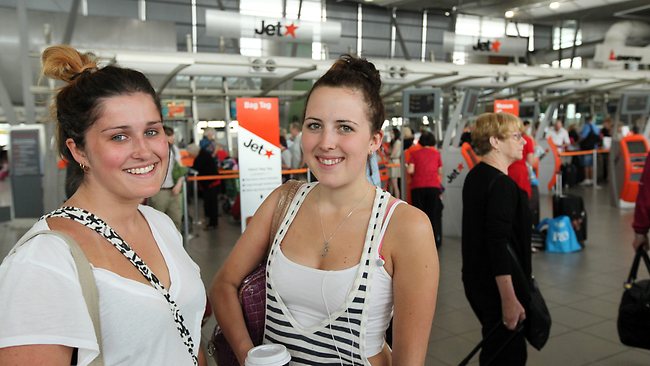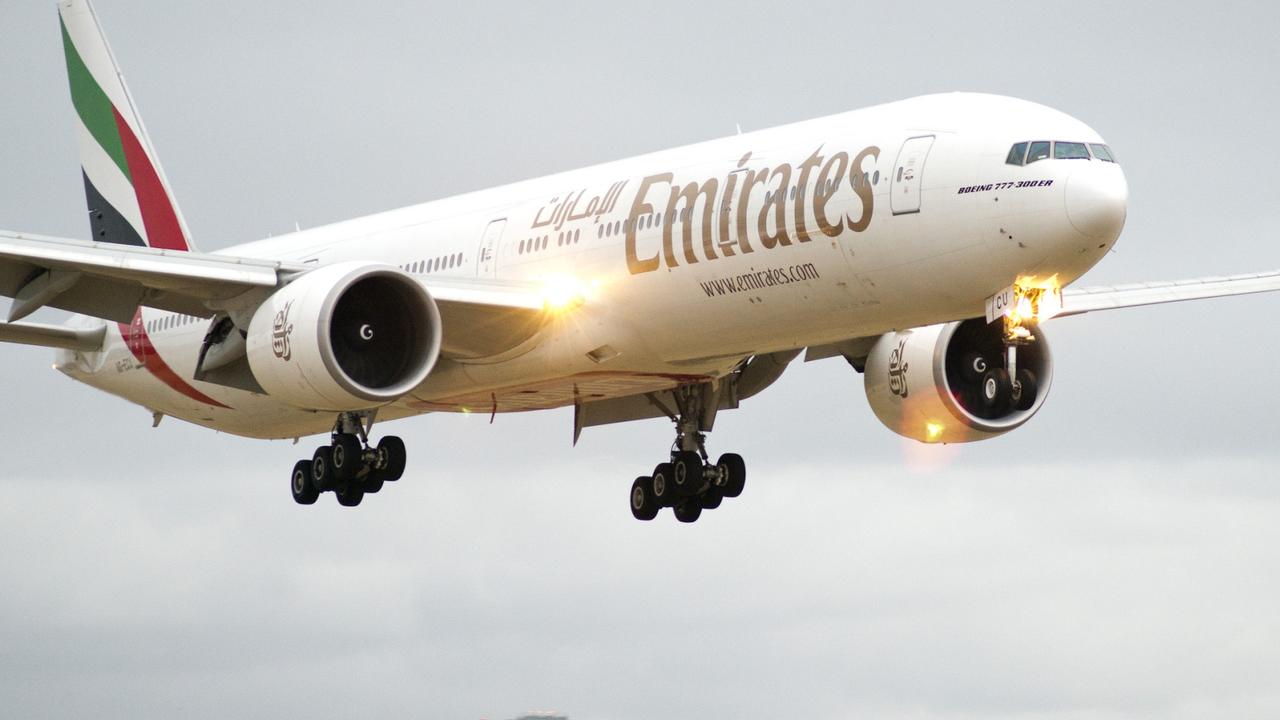Flying high in budget airline revolution
JETSTAR has achieved phenomenal growth since it began flying nine years ago, making travel accessible to a generation of Australians.

AS a university student, Bruce Buchanan remembers paying almost $300 to fly from Sydney to Launceston in Tasmania to visit his parent's farm.
Today, you can get the same fare for less than $80.
It's the budget airline revolution that has brought the joy of travel to a whole generation of people who previously could never have afforded it.
It's made long-distance relationships possible, opened up the option of commuting from regional areas and enabled people to reconnect with friends and family more often.
And Australians are taking up the opportunity in record numbers.
Almost 7.8 million international trips were taken by Australians last year, according to the Australian Bureau of Statistics. This was a million more than the year before. Even then the normally reserved ABS noted: "The number of Australian residents travelling overseas for trips of less than a year has grown at an unprecedented rate over recent years.''
Buchanan, the CEO of Qantas's budget offspring Jetstar, says visitation numbers to each destination has skyrocketed since Jetstar entered the market.
In less than a decade the carrier's domestic market share is already about 20 per cent, and there has been talk that it will overtake its big sister Qantas to become Australia's No.1 airline in the not-too-distant future.
Having converted everyday Australians into jetsetters, Buchanan says his focus is now firmly on Asia. The budget revolution will soon be sweeping the largest continent on the globe.
"We're very comfortable with what we service in the Australian marketplace and we work with it at a group level,'' he says.
"We really think this decade is the decade for North Asia because you have this massive growth in the middle class and you don't really have low-cost carriers there yet.''
Jetstar Asia, based in Singapore, and Jetstar Pacific, based in Vietnam, are also part owned by Qantas.
Tickets for Jetstar Japan, which will begin flying in July, went on sale this week, allowing Australian travellers to connect to five airports in Japan.
The airlines claims its fares will be up to 50 per cent less than full service carriers.
China and other destinations in Indonesia are also on Buchanan's radar.
"The airfares in Japan are almost three times the price they are in Australia,'' Buchanan says.
"I'm a big skiing fan so I'm looking forward to flying up to Sahoro on Jetstar and skiing at Niseko.''
Next month, it will be nine years since Jetstar's first commercial flight from Avalon Airport, on Melbourne's outskirts.
It has expanded from flying five Boeing 717s up and down the east coast of Australia to 89 aircraft flying to more than 60 destinations in 16 countries.
It has carried around 85 million passengers since launching and is on track to carry more than 20 million passengers during the 2012-13 financial year alone.
That makes it the largest low-fares carrier in the Asia Pacific region by revenue and one of the fastest growing.
Jetstar was the first low-fares airline to fly long haul, introduce SMS boarding and offer iPads on board.
Next August (2013), it is set to become the first Australian carrier and the first low-fare airline in the world to fly the 787 Dreamliner "plane of the future'', which has bigger windows, soft LED lighting and claims to reduce the effect of jet lag.
Jetstar was set up in response to then budget carrier Virgin Blue, which launched in 2000.
Like Virgin - now rebranded as Virgin Australia - it was based on low-cost airlines around the world, such as RyanAir in Europe and Southwest Airlines in the US.
"Virgin Blue was really encroaching on Qantas and hurting them and they needed to respond,'' says Horton.
"So they created a model that could operate more cheaply than Qantas, and that was Jetstar.
"We have seen airlines throughout the world try to create their own low-cost carrier and almost all of them have failed, so having a low-cost carrier from a full service carrier is quite unique.
"That allows the group to balance its network and choose which airline to use for which route.
"It's not a threat to Qantas though ... people are increasingly wanting cheaper fares, they don't necessarily want frequent flyer points, a meal or to check-in a suitcase
"If Qantas didn't have Jetstar people might fly with Virgin or Tiger Airways.''
Buchanan says the airline hasn't forgotten its fundamental commitment to customers - to provide great value, the lowest fares in the marketplace and a quality proposition.
Buchanan says the "graveyard'' of airline brands who have failed in the same endeavour didn't set the business model up properly or were not complementary to the existing business and ended up cannibalising it.
Australia's national carrier learned from their mistakes.
Now, airlines from around the world are asking Jetstar to show them how they did it.
Jetstar's two key competitors in Australia are Richard Branson's Virgin Australia and Tiger Airways, which have each gone in opposite directions in an effort to tackle the rising dragon.
Virgin is in the process of transforming, repositioning itself from an airline widely regarded as a budget brand to one catering for all sectors of the market. In response, Centre for Asia Pacific Aviation analyst Will Horton says Jetstar is also diversifying and offers business class on international flights.
"It now says: 'We'll have an economy fare but we'll also have an option that if you pay a bit more you can change your dates and gain frequent flyer points,'' he says.
"There's still that flexibility."
Meanwhile, Tiger suffered a major setback last year when the Civil Aviation Safety Authority suspended all flights in Australia for six weeks because of safety concerns following an incident in which an Airbus A320 flew into Avalon Airport below the lowest safe altitude.
Seven of its 10 aircraft based in Australia have resumed flying since, with greatly improved on-time performance.
Since then Tiger has increased its prices to make it more profitable since returning to the air, sending other fares up as well. Melbourne to Sydney fares on Tiger have risen from a ridiculously low $29 to around $49.
"Jetstar used to compete with Tiger on $39 fares whereas now they can charge $79,'' Horton says.
"Now the question is as Tiger puts more aircraft back into service will Jetstar discount fares more? It's only $10 to $20 extra for a passenger but for an airline it's the difference between a loss and a profit.''
But prices are still cheaper than they have ever been.
According to The Bureau of Infrastructure, Transport and Regional Economics, before Virgin launched in August 2000 the best discount economy fares were about $139.
The following month they dropped to a record low $75; this month they are around $55.
"While the trend is generally down, there have been spikes and troughs, and since Tiger's grounding last year fares shot up and are gradually falling, but are still more than before Tiger's grounding,'' Horton says.
"Today's higher fuel prices don't help.''
Even so, the budget revolution has created a whole generation of new travellers. A 2007 survey by Visa showed more than one in three young Australians planned to take their next holiday overseas. If anything that number has risen.
Nineteen-year-old Ashleigh Borthwick and 20-year-old Jordan Coulthard from Melbourne, who returned home via Sydney on Jetstar this week after a cruise around Vanuatu and New Caledonia, are part of that revolution. Already in their short lives the pair have also been to Bali, Thailand and the US.
By contrast, as Ashleigh observes, "My mum didn't fly for the first time until she was 30.''
Average families are also now able to access air travel that would previously have been prohibitively unaffordable.
This has created an unprecedented explosion in passenger numbers and is putting a massive strain on infrastructure, as the fierce pressure for a second Sydney airport proves. Passenger demand in Sydney is forecast to more than double by 2035 to 87 million and then redouble in the following 25 years.
More importantly though, it has given hitherto unknown opportunities to those who were previously left behind on the tarmac. Jenny Towers, 39, from Wollongong, New South Wales, says low-fares airlines have allowed her to travel more than she ever would have otherwise.
She has recently visited Tasmania, Queensland and Victoria.
"It's now a lot cheaper to fly, rather than drive," the mother-of-two says.
Buchanan says that's what gets him up in the morning. "That's the really cool part about low fares _ we help create these amazing experiences in people's lives," he says.
"We're making the whole planet a smaller place."
The skies have been democratised.



